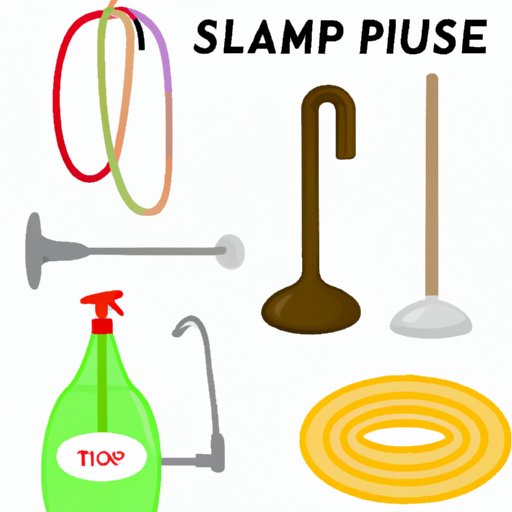
Introduction
It’s a universal experience – you flush the toilet and instead of subsiding, the water level rises and rises until it’s dangerously close to overflowing. Panic sets in, and you reach for the trusty plunger, only to find that it’s not working. Yes, a plunger is the most commonly used tool for unclogging toilets, but fear not – there are numerous other methods that can get the job done just as effectively.
Vinegar and Baking Soda Method
Vinegar and baking soda are two common household items that can come to the rescue when you are faced with an obstinate clog.
First, pour equal parts of baking soda and vinegar into the toilet bowl. As both ingredients react, they will start to fizz and make a foamy mixture. Leave it undisturbed for about 15 minutes or so.
Finally, flush the toilet with very hot or boiling water. Repeat the process as necessary.
Avoid using chemical drain cleaners as they may react negatively with the vinegar and baking soda solution.
Wire Hanger Method
A wire hanger can be fashioned into a hook that can be used to dislodge and remove clogs from the toilet.
First, find a wire coat hanger and unwrap it until it’s straight. Bend one end of the hanger to form a hook shape. Gently insert the hooked end into the drain and move it around until you feel the obstruction. Pull out the hanger and the clog should come with it. If the clog is still there, repeat the process until cleared.
It’s important that the hanger does not scratch or damage the inside of the bowl. Be mindful if using this method on toilets with porcelain bowls, which may be easily scratched.
Boiling Water and Dish Soap Method
This method entails using hot water and dish soap to remove tough clogs. The dish soap helps lubricate the bowl, while the hot water helps dissolve the blockage.
First, squirt some dish soap in the bowl. Then, pour in boiling water very slowly. Wait a few minutes, and flush the toilet. Repeat the process as necessary.
Be careful when pouring boiling water. Be sure to not splash any on yourself or around the toilet. Use gloves if you’re concerned about safety.
Plumbing Snake Method
A plumbing snake is a long flexible cable made of steel that is used to break up stubborn clogs. A plumbing snake can be found at most hardware stores and online shops.
Insert one end of the snake into the toilet bowl and twist the handle. Continue twisting the handle until the cable goes through the entire clog. Finally, pull out the snake and flush the toilet to make sure the clog is completely removed.
Take caution when using a plumbing snake. The metal cable is thick and may damage the toilet if used improperly. Be gentle and don’t force the snake through the obstruction.
Wet/Dry Vacuum Method
If a plunger doesn’t work and your toilet remains clogged, a wet/dry vacuum can save the day
Begin by suctioning out all the water in the toilet. It’s critical that no standing water remains in the toilet. Next, place the vacuum’s hose in the toilet and twist it around until the obstruction clears. Finally, turn on the vacuum and allow it to suction the clog out of the toilet.
Note that not all wet/dry vacuums can be used in this way safely. Read the vacuum’s instructions and use cautiously.
Conclusion
In conclusion, a clogged toilet can be a real hassle, but don’t let it fluster you. You can use any of these very effective alternative methods to get your toilet unclogged. Depending on the severity of the clog, some methods may work better than others, so try each one if needed. Whatever method you choose, proceed with safety precautions and patience. Never hesitate to reach out to a professional plumber if the problem persists.




